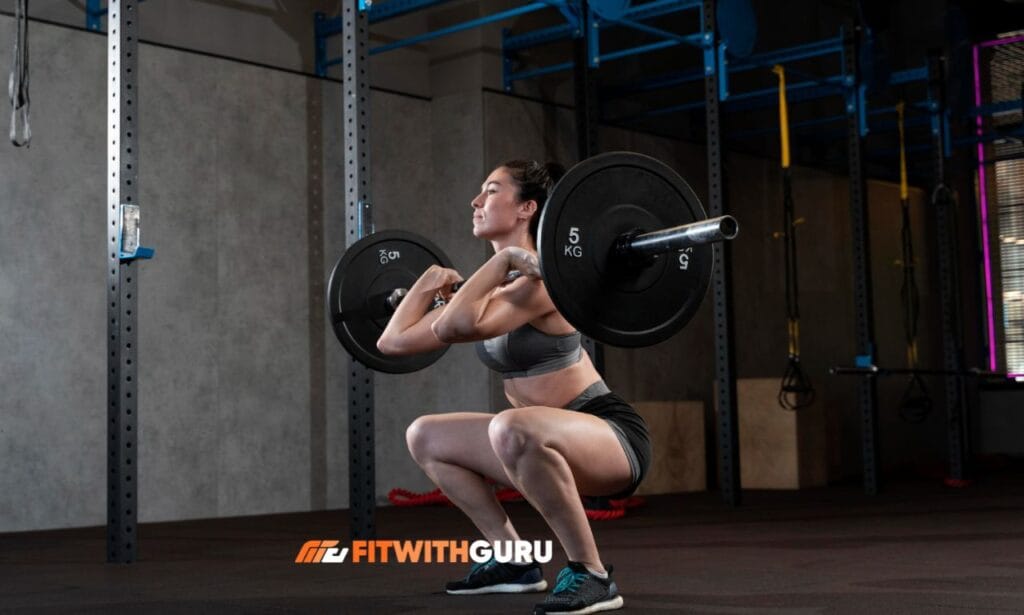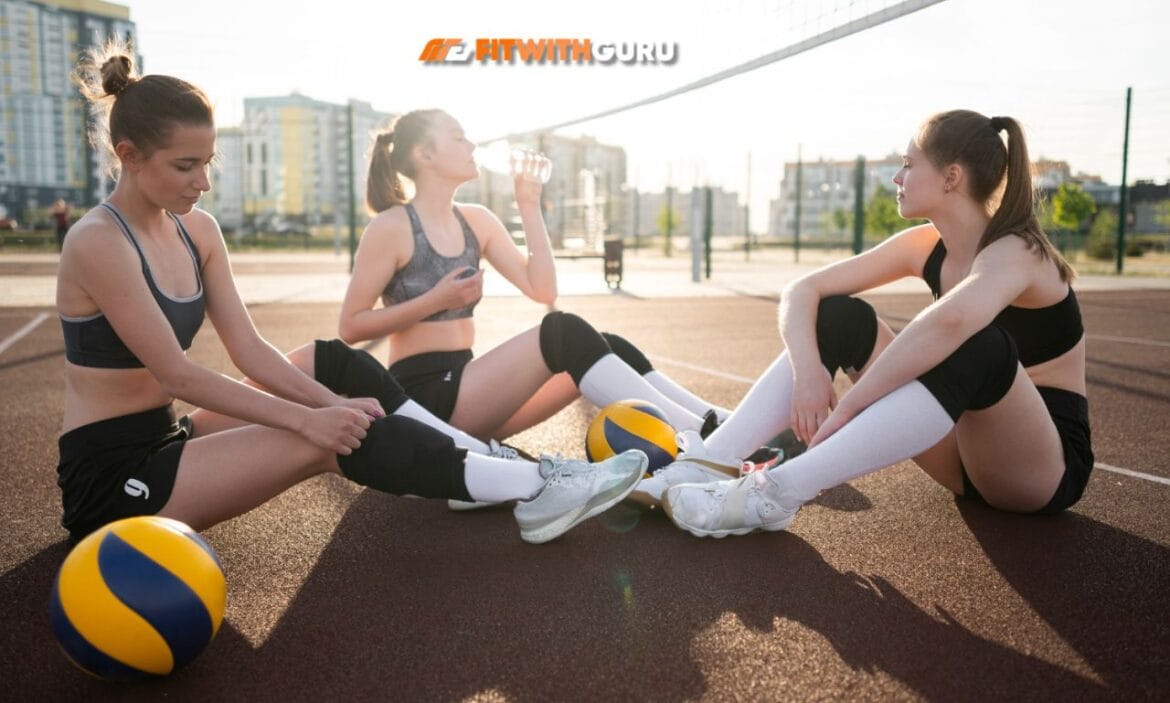Volleyball strength training is crucial for players seeking to elevate their game to the next level. It’s not just about hitting the ball harder or jumping higher; it’s about building a foundation of strength and power that supports these explosive movements.
Strong muscles improve your performance, help you stay injury-free, and allow you to maintain your energy throughout a match. Whether you are an amateur or a seasoned pro, integrating volleyball strength training into your routine is a game-changer.
Why Volleyball Strength Training is Crucial
Volleyball requires a combination of agility, explosiveness, and endurance. Without the necessary strength, players are at risk of injury, such as sprains or strains, from sudden movements.
Additionally, strength training supports better body mechanics, which enhances every aspect of the game, from serving to spiking to blocking. The stronger your muscles, the better your ability to generate power and control in these movements.
The 6 Best Volleyball Strength Training Exercises
Here are six essential exercises that should be part of any volleyball strength training routine. These exercises are designed to improve power, agility, and overall athleticism, ensuring that you’re fully prepared to excel on the court.
1. Squats: Building Leg Power and Stability
Squats are a foundational exercise for volleyball players because they target the quads, hamstrings, and glutes, which are key for movements like jumping, sprinting, and pivoting.
In volleyball, a strong lower body is essential for explosive jumping, whether you’re spiking, blocking, or serving. Squats also help with stability and endurance, which are crucial for maintaining performance throughout a match.

How to Perform a Basic Squat:
- Stand with your feet shoulder-width apart.
- Lower your hips back and down as if sitting in a chair.
- Keep your chest up, knees behind your toes.
- Return to the starting position by pushing through your heels.
2. Deadlifts: Strengthening the Posterior Chain
Deadlifts are essential for strengthening the posterior chain (the muscles along the back of your body), including your hamstrings, glutes, and lower back.
This muscle group plays a critical role in generating the explosive power required for jumping and sprinting. Deadlifts also improve core strength and stability, essential for preventing injury and enhancing overall performance on the court.
How to Perform a Deadlift:
- Place the barbell in front of you and stand with your feet hip-width apart.
- Bend at your hips and knees to grip the bar with both hands.
- Straighten your hips and knees at the same time to raise the bar.
- Lower the bar back to the ground, maintaining a neutral spine throughout the movement.
3. Plyometric Push-Ups: Enhancing Upper Body Power
Plyometric push-ups are an explosive upper-body exercise that helps increase the power of your chest, shoulders, and triceps. These muscles are crucial for performing powerful serves, spikes, and blocks.
Plyometric push-ups also engage the core, making them an excellent full-body exercise.
How to Perform a Plyometric Push-Up:
- Start in a push-up position, hands slightly wider than shoulder-width.
- Lower yourself to the ground as in a regular push-up.
- Explode off the ground, propelling your hands up so they briefly leave the floor.
- After a gentle landing, lower yourself into the subsequent push-up.
4. Box Jumps: Improving Vertical Jump and Explosiveness
Box jumps are fantastic for increasing your vertical leap, which is vital for all volleyball players. Whether you are spiking, blocking, or serving, a higher jump can give you a competitive edge.
Box jumps target the quadriceps, gluteals, hamstrings, and calves, improving lower-body power and coordination.
How to Perform a Box Jump:
- Place your feet shoulder-width apart and stand in front of a solid box or platform.
- Lower into a squat, then explode upward, using your arms to help with momentum.
- Land softly on the box with your knees slightly bent.
- Step down from the box and repeat.
5. Lunges: Strengthening the Legs and Improving Balance
Lunges are a fantastic exercise for building strength in your legs and improving your balance. In volleyball, balance is essential for quick, reactive movements, especially when you need to change direction suddenly.
Lunges also engage the core, providing additional stability.
How to Perform a Basic Lunge:
- Stand upright, feet together.
- With one leg, take a step forward and bend both knees to a 90-degree angle by lowering your hips.
- Push off the front foot to return to the starting position.
- Repeat with the other leg.
6. Medicine Ball Slams: Building Core and Upper Body Strength
Medicine ball slams are an explosive, full-body movement that helps build core strength and upper body power. This exercise is great for volleyball players, as it mimics the explosive movements needed for spiking and serving.
Medicine ball slams also engage your legs, shoulders, and arms, helping to enhance coordination and overall athleticism.

How to Perform a Medicine Ball Slam:
- Stand with your feet shoulder-width apart, holding a medicine ball with both hands.
- Lift the ball over your head, then forcefully smack it down.
- As soon as the ball bounces back, catch it and repeat the motion.
Tips for Effective Volleyball Strength Training
While the above exercises are key to improving your volleyball performance, here are a few additional tips to make your training even more effective.
Focus on Compound Movements
Compound exercises like squats, deadlifts, and lunges engage multiple muscle groups at once, making them efficient for developing overall strength.
These exercises are time-effective and provide the greatest benefit for volleyball players, targeting both the upper and lower body.
Incorporate Plyometric Training
Plyometric exercises, such as box jumps and plyometric push-ups, improve your explosiveness and agility, which are critical for volleyball players. Incorporating these explosive movements into your routine will help increase your vertical jump, speed, and quickness.
Don’t Neglect Core Training
A strong core is essential for maintaining balance and stability during volleyball movements. Whether you’re spiking, blocking, or passing, a powerful core allows you to generate more force and control.
Make sure to include core-strengthening exercises like planks and Russian twists in your training.
Progressive Overload
You must gradually test your muscles if you want to keep getting stronger. This can be achieved by gradually increasing the weight you lift, adding more repetitions, or changing the intensity of your exercises.
Progressive overload ensures that your muscles are constantly growing and adapting.
Rest and Recovery
Rest is just as important as training. Overtraining can lead to fatigue and injury, so make sure to allow adequate recovery time between strength training sessions. Sleep, proper nutrition, and stretching are essential for supporting muscle growth and ensuring your body is ready for the next training session.
People Also Ask
1. How often should I do strength training for volleyball?
For volleyball players, strength training should be done 2-3 times a week. This allows for muscle recovery while still providing the strength benefits necessary for the sport. Balance strength training with skill-focused practice and conditioning.
2. Can I do volleyball strength training on the same day as practice?
Yes, but it depends on your practice intensity. If your practice is long or intense, it’s best to separate strength training and practice into different days to prevent overtraining. If your practice is lighter, you can combine strength training afterward.
3. How long will it take to see results from strength training?
Results from strength training usually take about 4-6 weeks to become noticeable, depending on your consistency and effort. Expect to see improvements in strength, power, and performance over time as you continue your training regimen.
4. Should I use weights for volleyball strength training?
Yes, using weights in your training is very beneficial. Free weights, resistance bands, and machines all contribute to increasing your strength and power. Proper technique is crucial to avoid injury and ensure the exercises are effective.
5. Can strength training help prevent volleyball injuries?
Absolutely. Strength training strengthens muscles, ligaments, and tendons, which reduces the risk of injuries like sprains or strains. Additionally, it enhances overall body mechanics, which improves balance and posture on the court.
Conclusion
Volleyball strength training is a crucial component of a successful athlete’s training regimen. Whether you’re looking to jump higher, hit harder, or avoid injury, these six exercises—squats, deadlifts, plyometric push-ups, box jumps, lunges, and medicine ball slams—will help you build the necessary strength and explosiveness for the court.
Pair these exercises with proper nutrition, rest, and progressive overload, and you’ll be well on your way to becoming a more powerful, resilient volleyball player.

